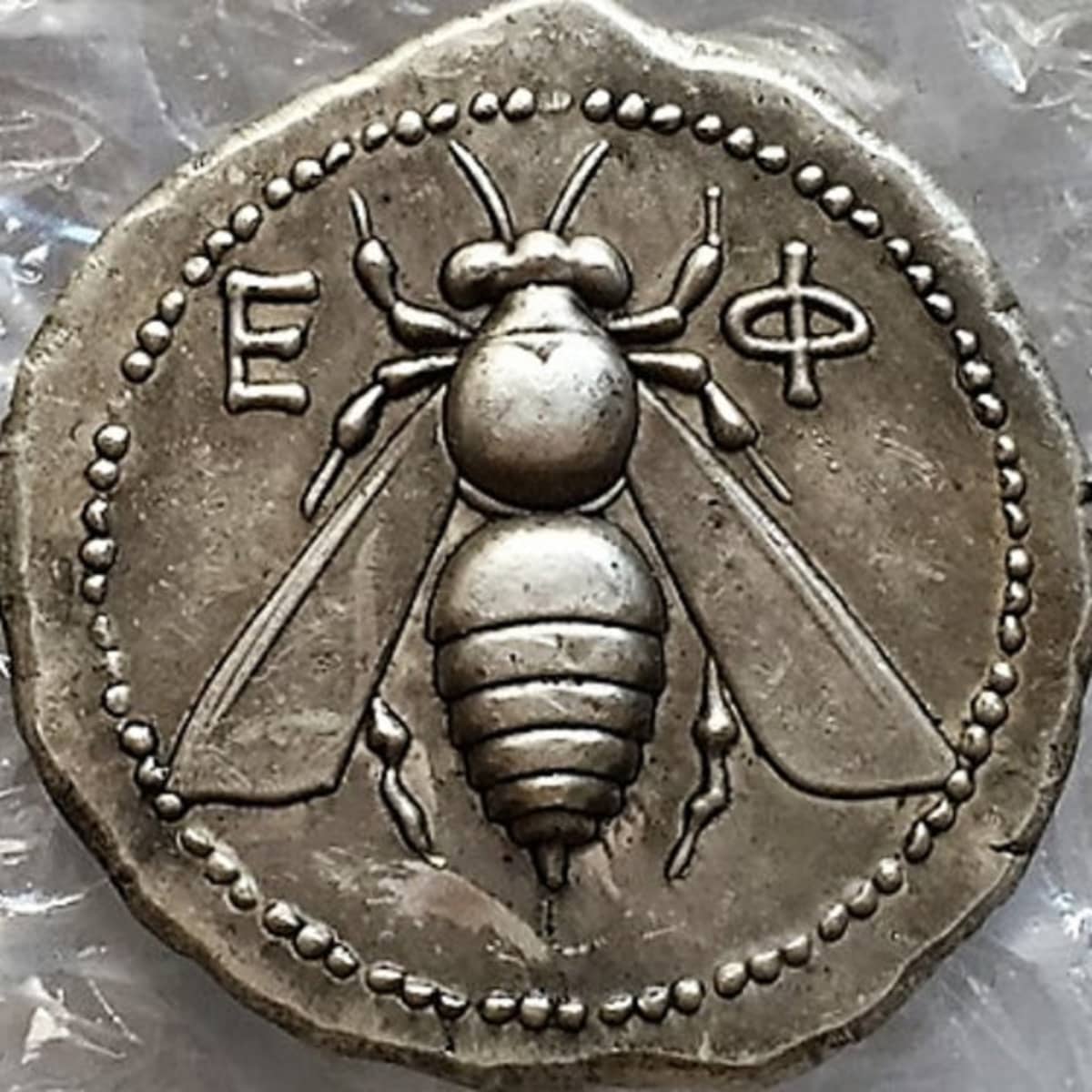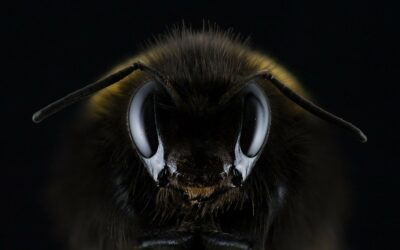Aristotle supposed that wax came from flowers. This belief persisted until the Renaissance, while in 1744 a mention was made that bees themselves produce wax (H. C. Hornbostel). Almost 50 years later, this information was confirmed by J. Hinter, and in 1812, Swiss beekeeper Francois Huber published his observations on the subject.
Even primitive man used beeswax, as traces of beeswax have been found in Lascaux Cave. The most accurate and reliable information about its existence and use by humans is found in ancient Greek sources. One such source is the myth of Icarus, son of Daedalus. It says that Icarus created wings for himself from white wax and flew high into the sun, where the fragile wax wings melted under the heat after which Icarus fell to the ground.
Beeswax also existed in accounts from ancient Egypt. It was used to embalm the dead and seal coffins, making mummification perfect. With the help of wax, papyrus and paintings on the walls of caves were protected, so they were preserved for more than 2,000 years. The Egyptians also used it during shipbuilding as a sealing medium.
The ancient Romans, on the other hand, used beeswax to isolate walls from water, so they collected taxes from numerous populations in the form of wax as well. It was also used to send messages. Two wooden plates were connected with string, and then the inner surface was covered with wax and a message was written on it.
In ancient times, sculptures and jewelry were produced using beeswax. Beeswax was also used in the manufacture of casting stencils.
On the other end of the world in India and Java, on the other hand, beeswax was used in the process of so-called blue dyeing as an impermeable agent. That is, wax in a suitable pattern was applied to white cotton cloth, and then the cloth was dyed in an indigo solution. The dye only colored the fabric in those areas where there was no wax. This is how white and blue patterns were created on fabrics.
Mention should also be made of China, which was the first to recognize the positive effects of beeswax on health and beauty. Among other things, beeswax was used in skin creams, ointments, lotions or lipsticks. Interestingly, China is still today a leader in the use of beeswax in aesthetic medicine, cosmetics or pharmaceuticals.
The use of beeswax in medicine
The earliest references to the use of beeswax as a medicine can be found in ancient Egyptian papyri almost 2,000 years before Christ’s birth.
In ancient Greece, many doctors, including Hippocrates, recommended applying a layer of wax to the neck in case of tonsillitis. Beeswax is used as both a cough suppressant and expectorant, as well as to stimulate milk in nursing women. Early last century, the left part of a Neolithic man’s jaw was found in northern Istria near Lonche (Slovenia). It was the jaw of a man aged 24-30 years, who lived 6,500 years ago. It was discovered that beeswax was attached to the mandibular canine, probably placed there to relieve pain. On the other hand, an artificial tooth made of wax was found in the Gebel Ramlah cemetery in Egypt, which probably served as a mini denture.
Beeswax candles
Beeswax has been used to make candles since around the 2nd century AD. In addition to the ancient Egyptians, beeswax candles were also used by the Romans and Greeks. Later, with the advent of Christianity, the faithful also began to use them in their temples. And in time, the Roman Catholic Church established a law mandating the use of candles made only of beeswax in church. In those days, each abbey had its own apiary, so it could provide the necessary amount of wax. These candles were also used in Eastern Orthodox churches, because they did not drip and emitted smoke that is almost invisible. and perhaps also because the flame of a beeswax candle is warmer and more yellow.
Other interesting uses of beeswax
Beeswax was also used to strengthen threads and yarns and to make them waterproof. It was also used to fasten various components in bows. For centuries, beeswax was used to make bullets, as it insulated gunpowder well, and in addition, a bullet covered with a wax layer left the barrel of a rifle faster.
Wax played an important role in recording sound. After many earlier attempts with different materials, Thomas Edison used wax to cover the cylinders in his famous phonograph. Emil Berliner, the maker of long-playing records, also followed in his footsteps. Wax was also used to preserve bronze statues. They had to be covered twice a year with wax dissolved in pure pine turpentine.
Beeswax in the function of money
Since the dawn of time, beeswax has been a highly valued material. It was a raw material with many functions, common in use, often essential, yet relatively rare. It was these qualities that made beeswax, along with salt, copper, bronze, silver or gold, acquire the status of a means of payment.
Taking wax as an accepted medium of value was common in ancient Rome. For example, in 181 BC when the Corsicans were defeated by the Romans, they had to pay a tax of one hundred thousand pounds of beeswax. In turn, after the capture of the fortress of Trabzon in the first century AD, they were also required to hand over all available wax in the city.
From the 5th century onward in the Polish territories, wax and honey were common means of payment. This form of settlement of commodity exchange was also readily accepted by the Vikings, who were then manifesting commercial activity in Central and Eastern Europe. In the Middle Ages, beeswax was considered such a valuable material that it was accepted as a means of payment. E.g., in 1300 each French farmer was required to pay an annual tax of 2 pounds of beeswax. During the reign of Tsar Peter I, wax was considered a valuable trade commodity like salt, flax, leather, hemp, lard, and as a result, a tsarist monopoly was imposed on the purchase and sale of this resource.
Epilogue
Many of the uses of beeswax that mankind has recorded over the past two and a half thousand years are now just historical curiosities. Many of the historical uses are still present today in more or less niche areas where traditional or organic methods of making various products are particularly important or have their ardent supporters. Examples of such areas include candle-making, cosmetics or wood preservation.
Nevertheless, nowadays, wax is finding new use cases in many areas. Beginning with its use in beekeeping itself (both amateur and professional), where wax has already become a strategic and virtually irreplaceable material in most of the world, and the process is progressing in other countries. And ending with new applications resulting from the “eco trend,” an example of which is the method of food storage that is gaining in popularity, the so-called wax wraps.
All this allows us to assume , or rather to be sure, that the history of beeswax is far from over and will hopefully last another 2.5 thousand years.
Beeio – Beeswax as a store of value in the 21st century and Blockchain.
As a strategic raw material for many key industries, from the point of view of humanity (e.g. medicine, beekeeping), beeswax will always be a very important raw material. It is the payment and settlement function that is the focus of the Beeio project. We want to resuscitate the function of beeswax as a “carrier of value.” Beeio assumes linking this very function of beeswax to the cryptocurrency market and Blockchain technology. This is the focus of the Beeio team’s work in 2022.


